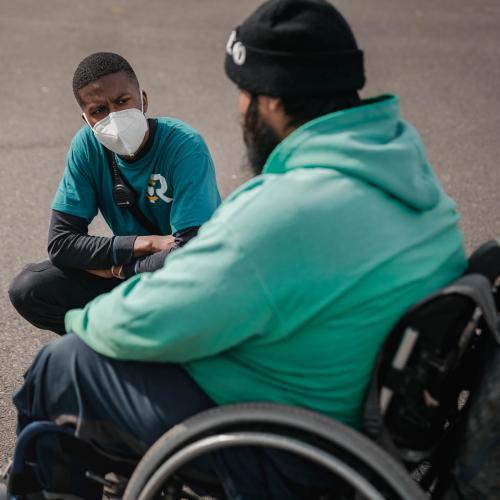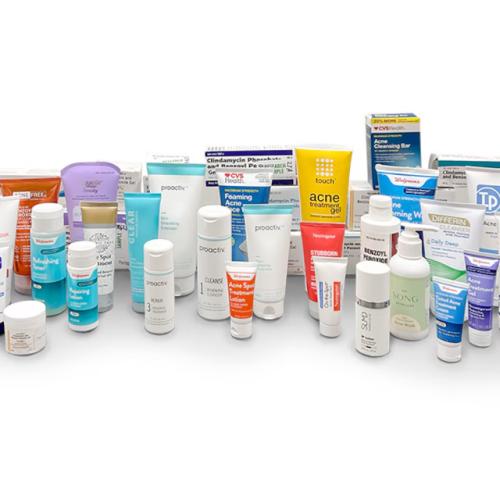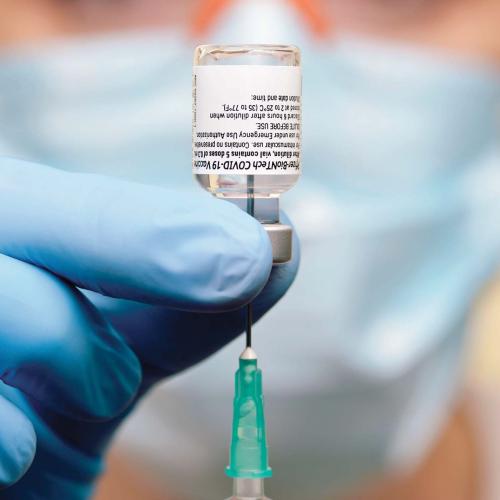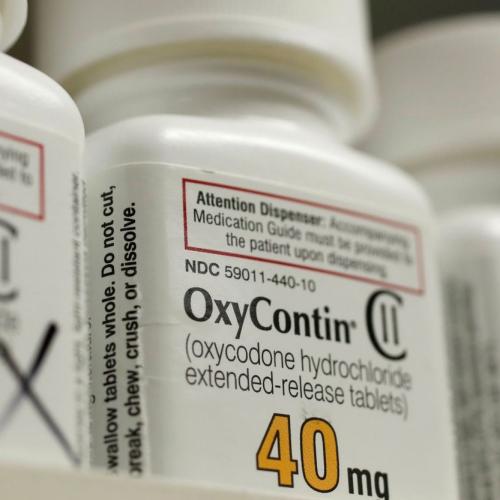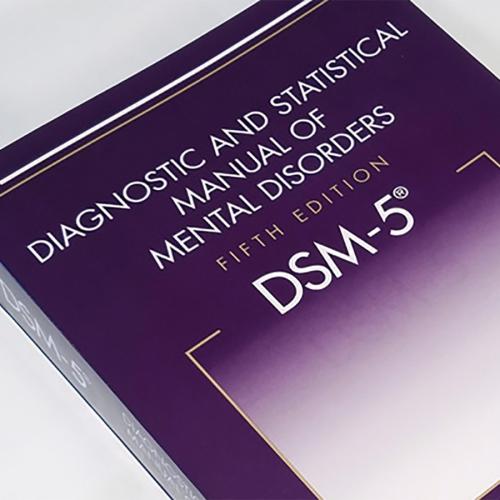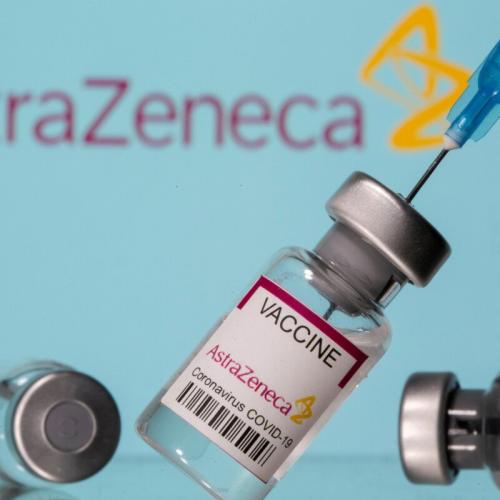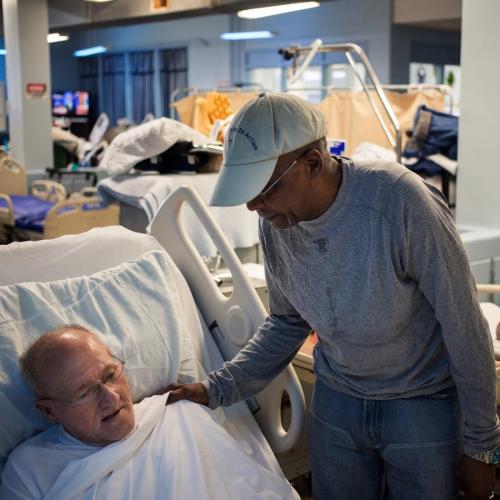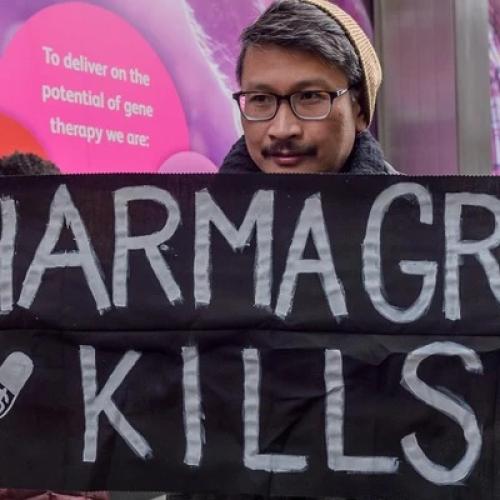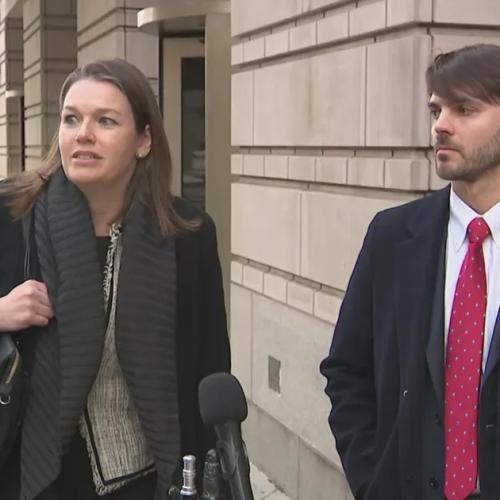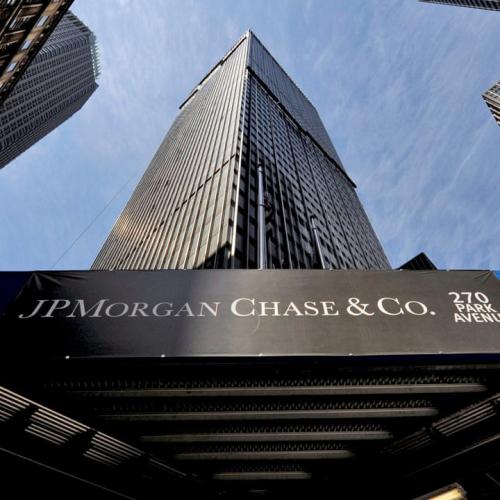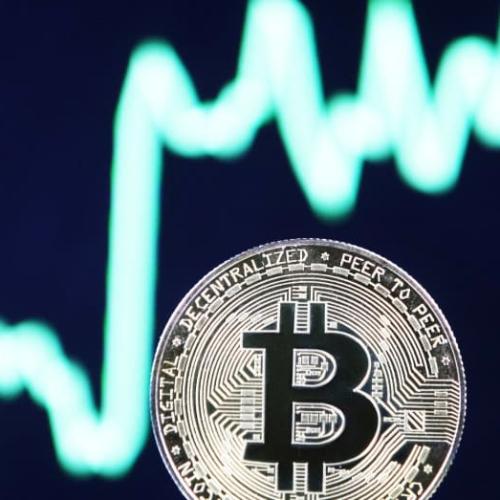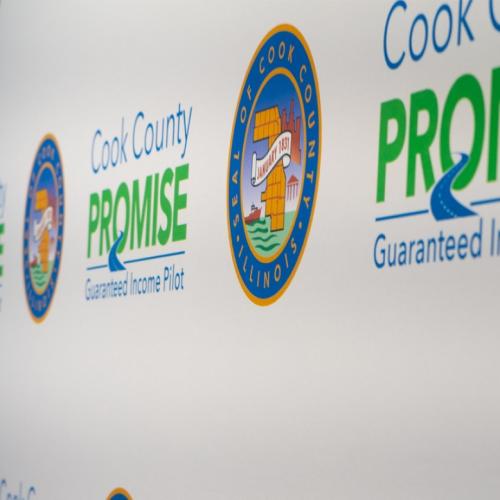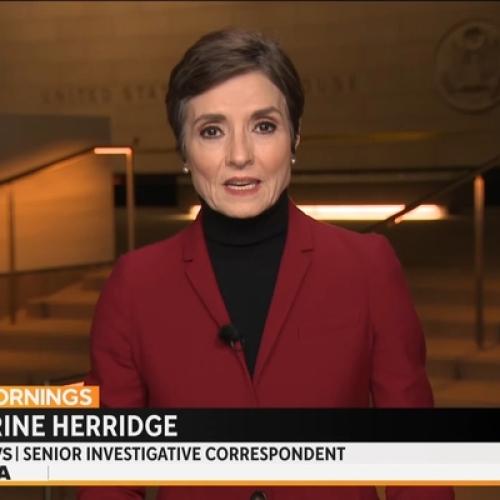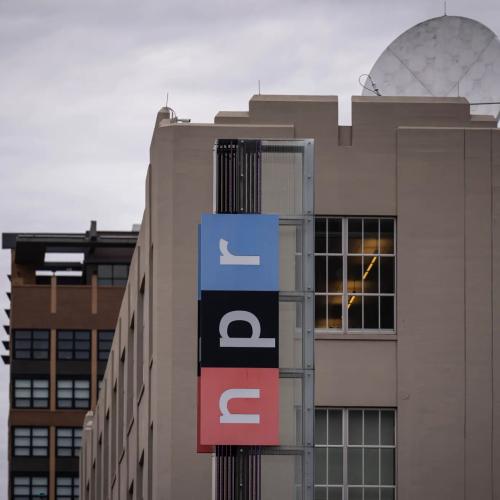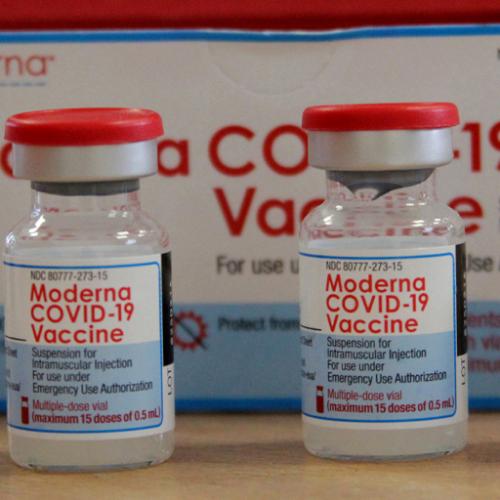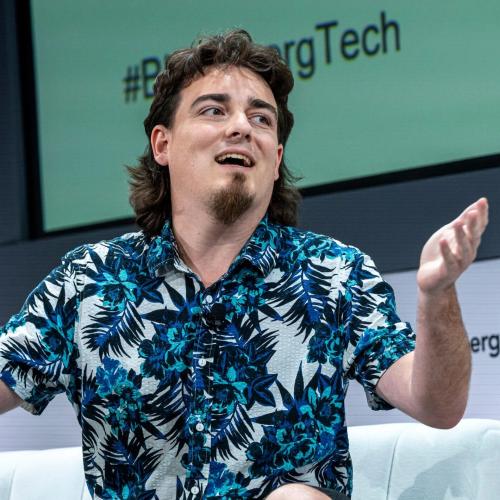Pharmaceutical Corruption News Articles
Below are key excerpts of revealing news articles on pharmaceutical industry corruption from reliable news media sources. If any link fails to function, a paywall blocks full access, or the article is no longer available, try these digital tools.
For further exploration, delve into our comprehensive Health and Food Corruption Information Center.
If you follow the news about health research, you risk whiplash. First garlic lowers bad cholesterol, thenafter more studyit doesnt. Hormone replacement reduces the risk of heart disease in postmenopausal women, until a huge study finds that it doesnt. But what if wrong answers arent the exception but the rule? More and more scholars who scrutinize health research are now making that claim. It isnt just an individual study here and there thats flawed, they charge. Instead, the very framework of medical investigation may be off-kilter, leading time and again to findings that are at best unproved and at worst dangerously wrong. The result is a system that leads patients and physicians astrayspurring often costly regimens that wont help and may even harm you. Even a cursory glance at medical journals shows that once heralded studies keep falling by the wayside. A major study concluded theres no good evidence that statins (drugs like Lipitor and Crestor) help people with no history of heart disease. The study ... was based on an evaluation of 14 individual trials with 34,272 patients. Cost of statins: more than $20 billion per year. Positive drug trials, which find that a treatment is effective, and negative trials, in which a drug fails, take the same amount of time to conduct. But negative trials took an extra two to four years to be published. With billions of dollars on the line, companies are loath to declare a new drug ineffective. As a result of the lag in publishing negative studies, patients receive a treatment that is actually ineffective. From clinical trials of new drugs to cutting-edge genetics, biomedical research is riddled with incorrect findings.
Note: For the good of your health, the entire article at the link above is well worth reading. For lots more on how the profit-oriented health profession puts public health at risk, click here and here.
They're some of the most trusted voices in the defense of vaccine safety: the American Academy of Pediatrics, Every Child By Two, and pediatrician Dr. Paul Offit. But CBS News has found these three have something more in common - strong financial ties to the industry whose products they promote and defend. The vaccine industry gives millions to the Academy of Pediatrics for conferences, grants, medical education classes and even helped build their headquarters. The totals are kept secret, but public documents reveal bits and pieces. A $342,000 payment from Wyeth, maker of the pneumococcal vaccine - which makes $2 billion a year in sales. A $433,000 contribution from Merck, the same year the academy endorsed Merck's HPV vaccine - which made $1.5 billion a year in sales. Every Child By Two, a group that promotes early immunization for all children, admits the group takes money from the vaccine industry, too - but wouldn't tell us how much. Then there's Paul Offit, perhaps the most widely-quoted defender of vaccine safety. He's gone so far as to say babies can tolerate "10,000 vaccines at once." In fact, he's a vaccine industry insider. Offit holds a $1.5 million dollar research chair at Children's Hospital, funded by Merck. He holds the patent on an anti-diarrhea vaccine he developed with Merck. And future royalties for the vaccine were just sold for $182 million cash.
Note: An excellent report endorsed by many respected doctors and nurses reveals the serious risks of vaccines. Read an incisive list of questions regarding vaccines that are rarely raised by the media. The report accessible on this US government webpage states, "Since 1988, over 24,200 petitions have been filed with the VICP [Vaccine Injury Compensation Program] ... with 8,162 of those determined to be compensable. Total compensation paid over the life of the program is approximately $4.5 billion." Why isn't that huge price tag for vaccine injuries being talked about?
Researchers have long known that any single antidepressant drug is little more effective than a placebo in the majority of trials, shown to be less effective than a placebo in some studies, and generally found to be “clinically negligible” with respect to depression remission, while often resulting in severe adverse effects; for example, resulting in a higher percentage of sexual dysfunction than depression remission. However, for nearly twenty years, psychiatry and Big Pharma have told us that while one antidepressant may not work for the majority of patients, in the “real world,” doctors provide patients who have been failed by their initial antidepressant with another antidepressant, and if that fails, still another; and that this real-world treatment is successful for nearly 70% of patients. The problem with this “nearly 70%” story is that the research that has been used to justify it, a 2006 report on the results of the Sequenced Treatment Alternatives to Relieve Depression (STAR*D), has long been disputed by researchers. Moreover, a recent reanalysis of previously undisclosed data reveals that STAR*D, owing to scientific misconduct that dramatically inflated remission rates, may go down in US medical history as one of its most harmful scandals. Even [STAR*D's] fabricated 67% depression remission rate should never have been celebrated. 85% of depressed individuals who go without somatic treatments spontaneously recover within 1 year.
Note: Read more important news articles we've summarized on medical and scientific corruption regarding antidepressants. For more along these lines, see concise summaries of deeply revealing news articles on Big Pharma corruption from reliable major media sources.
While I was out of town on business, I got a call from my dad who told me my husband Woody had been found hanging—dead at age 37. Woody wasn’t depressed and he hadn’t had a history of depression nor any other mental illness. His doctor had prescribed the antidepressant Zoloft to take the edge off. In the following weeks, I started to investigate, to try and understand why my perfectly normal husband had decided to end his life. The only thing that made sense ... Zoloft. Figuring out Zoloft’s dangers completely altered my life’s trajectory, absorbing years of my time. Today, I sit on one of the Food and Drug Administration (FDA) advisory committees that reviews new drugs coming to market. I initially thought that what I was learning about Zoloft was just an isolated issue with antidepressants. But I soon realized it was part of a much bigger, systemic problem with our nation’s drug safety system. The pharmaceutical industry is driven by commercial interests, not public health, and this problem is compounded by a lack of transparency, conflicts of interests, manipulation of clinical trials, and undue corporate influence across the government. Marketing companies ghostwrite pharmaceutical studies for academics who sometimes barely read the papers that get submitted to medical journals, and drug makers then cite these ghostwritten studies as peer-reviewed proof of their products’ safety and efficacy. The revolving door between Big Pharma and the FDA spins faster than the one between the Pentagon and the defense industry.
Note: This guest essay is written by Kim Witczak, a globally renowned advocate for pharmaceutical drug safety and FDA reform. Antidepressants have been found to increase the risk of suicide in some patients. For more along these lines, see concise summaries of deeply revealing news articles on health and Big Pharma corruption from reliable major media sources.
A new study published in JAMA Psychiatry finds that almost everyone will be treated for mental illness at some point in their lives and that their lives are worse in many ways after receiving diagnosis and treatment. About 80% of the population will be hospitalized or receive psychiatric drugs. After treatment, they are more likely to end up poor, unemployed, and receiving disability benefits, and they have worsening social connections. According to the researchers, the likelihood of getting prescribed psychiatric drugs during your lifetime was 82.6% (87.5% for women and 76.7% for men). The likelihood of being hospitalized for mental illness was 29.0% (31.8% for women and 26.1% for men). On average, the 80% who were treated for mental illness were already struggling before treatment. But after treatment, things only got worse. After treatment, “individuals with any mental health disorder were more likely to experience new socioeconomic difficulties, compared with control individuals from the general population,” the researchers write. “During follow-up, they were more likely to become unemployed or receive a disability benefit, to earn lower income, to be living alone, and to be unmarried.” There is copious evidence that antidepressant use leads to worse outcomes in the long term, even after controlling for the severity of depression and other factors. The adverse effects of the drugs lead to worse health outcomes for those taking them, and withdrawal symptoms prevent people from being able to discontinue.
Note: For more along these lines, see concise summaries of deeply revealing news articles on health from reliable major media sources. Then explore the excellent, reliable resources provided in our Health Information Center.
Goldman Sachs analysts attempted to address a touchy subject for biotech companies, especially those involved in the pioneering "gene therapy" treatment: cures could be bad for business in the long run. "Is curing patients a sustainable business model?" analysts ask in an April 10 report entitled "The Genome Revolution." "The potential to deliver 'one shot cures' is one of the most attractive aspects of gene therapy, genetically-engineered cell therapy and gene editing. However, such treatments offer a very different outlook with regard to recurring revenue versus chronic therapies," analyst Salveen Richter wrote in the note to clients. "While this proposition carries tremendous value for patients and society, it could represent a challenge for genome medicine developers looking for sustained cash flow." Richter cited Gilead Sciences' treatments for hepatitis C, which achieved cure rates of more than 90 percent. The company's U.S. sales for these hepatitis C treatments peaked at $12.5 billion in 2015, but have been falling ever since. "GILD is a case in point, where the success of its hepatitis C franchise has gradually exhausted the available pool of treatable patients," the analyst wrote. "In the case of infectious diseases such as hepatitis C, curing existing patients also decreases the number of carriers able to transmit the virus to new patients, thus the incident pool also declines. Where an incident pool remains stable (eg, in cancer) the potential for a cure poses less risk to the sustainability of a franchise."
Note: Many cancer treatments have been suppressed, sometimes in brutal ways, because the medical profession would lose the huge profits of traditional cancer treatments. Watch this video for undeniable evidence showing that this is the case. Read an excellent article on how the profiteering drug industry is crippling our children, possibly even intentionally. For more along these lines, see concise summaries of deeply revealing health news articles from reliable major media sources.
Federal prosecutors in the U.S. will be reading with amusement the Australian press's coverage of a class action trial down under for patients who took Merck's now-withdrawn painkiller Vioxx. Details emerging in Oz make some of the antics that Merck's American counterparts got up to look tame by comparison. For example, in Australia, Merck allegedly: Had a doctor sign his name to an entirely ghostwritten journal article even though a Merck staffer had complained that the data within it was based on "wishful thinking;" created a fake "peer-reviewed" journal, the "Australasian Journal of Bone and Joint Medicine," in which to publicize pro-Vioxx articles; created a Ricky Martin-style pop song to get Merck sales reps all jazzed up about Vioxx; [and] hatched a Blackadder-style "cunning plan" to seed seminars with speakers who were sympathetic to Vioxx. Here's The Australian's description of the Merck PR team's over-the-top "handling" of reporters at ... a class action trial down under for patients who took Merck's now-withdrawn painkiller Vioxx: A hired crisis management team sits in court every day, under the guidance of Merck & Co's media spokeswoman flown out from the US, watching what journalists write, who they talk to and where they go in the court breaks. The team ... follow journalists out of court, ask them what they are writing, hand out daily press releases and send "background" emails they say should not be attributed to the company but which detail what they think are the "salient points" from the evidence presented in court. The team rings reporters first thing in the morning, accuses them of "cherry-picking" the evidence and bombards newspapers with letters to the editor arguing their case in detail based on the day's evidence - five were sent to The Australian in just seven days.
Note: FDA analysts estimated that Vioxx caused between 88,000 and 139,000 heart attacks, 30 to 40 percent of which were probably fatal, in the five years the drug was on the market. Read another CBS News article which shows how Merck literally created a hit list for doctors who opposed use of Vioxx. For more along these lines, see concise summaries of deeply revealing health corruption news articles from reliable major media sources.
An international drug company made a hit list of doctors who had to be "neutralised" or discredited because they criticised the anti-arthritis drug the pharmaceutical giant produced. Staff at US company Merck &Co emailed each other about the list of doctors - mainly researchers and academics - who had been negative about the drug Vioxx or Merck and a recommended course of action. The email, which came out in the Federal Court in Melbourne yesterday as part of a class action against the drug company, included the words "neutralise", "neutralised" or "discredit" against some of the doctors' names. It is also alleged the company used intimidation tactics against critical researchers, including dropping hints it would stop funding to institutions and claims it interfered with academic appointments. "We may need to seek them out and destroy them where they live," a Merck employee wrote, according to an email excerpt read to the court by Julian Burnside QC, acting for the plaintiff. Merck & Co and its Australian subsidiary, Merck, Sharpe and Dohme, are being sued for compensation by more than 1000 Australians, who claim they suffered heart attacks or strokes as a result of Vioxx. The drug was launched in 1999 and at its height of popularity was used by 80 million people worldwide because it did not cause stomach problems as did traditional anti-inflammatory drugs. It was voluntarily withdrawn from sale in 2004 after concerns were raised that it caused heart attacks and strokes and a clinical trial testing these potential side affects was aborted for safety reasons. Merck last year settled thousands of lawsuits in the US over the effects of Vioxx for $US 4.85 billion, but made no admission of guilt.
Note: For lots more on corporate corruption from reliable sources, click here.
We could make faster progress against cancer by changing the way drugs are developed. In the current system, if a promising compound cant be patented, it is highly unlikely ever to make it to market no matter how well it performs in the laboratory. The development of new cancer drugs is crippled as a result. The reason for this problem is that bringing a new drug to market is extremely expensive. In 2001, the estimated cost was $802 million; today it is approximately $1 billion. To ensure a healthy return on such staggering investments, drug companies seek to formulate new drugs in a way that guarantees watertight patents. In the meantime, cancer patients miss out on treatments that may be highly effective and less expensive to boot. In 2004, Johns Hopkins researchers discovered that an off-the-shelf compound called 3-bromopyruvate could arrest the growth of liver cancer in rats. The results were dramatic; moreover, the investigators estimated that the cost to treat patients would be around 70 cents per day. Yet, three years later, no major drug company has shown interest in developing this drug. The hormone melatonin, sold as an inexpensive food supplement in the United States, has repeatedly been shown to slow the growth of various cancers when used in conjunction with conventional treatments. Early this year, another readily available industrial chemical, dichloroacetate, was found by researchers at the University of Alberta to shrink tumors in laboratory animals by up to 75 percent. However ... dichloroacetate is not patentable, and the lead researcher is concerned that it may be difficult to find funding from private investors to test the chemical. Potential anticancer drugs should be judged on their scientific merit, not on their patentability.
Note: To explore several cancer cures which have shown dramatic potential, yet are not being studied for lack of funds due to inability to patent the process, click here. Why are these very promising treatments not being fast-tracked as the expensive AIDS drugs were? For a top MD's revealing comments on this, click here. And for why the media won't feature these promising cancer treatments in headlines, click here.
Marcia Angell [is] a faculty member at the Harvard Medical School [and one of the] former editors of The New England Journal of Medicine. Her new book, "The Truth About the Drug Companies," is a sober, clear-eyed attack on the excesses of drug company power. How does the drug industry deceive us? It plies attending physicians with expense-paid junkets to St. Croix and Key West, Fla., where they are given honoraria and consulting fees to listen to promotional presentations. It promotes new or little-known diseases such as "social anxiety disorder" and "premenstrual dysphoric disorder" as a way of selling the drugs that treat them. It sets up phony front groups disguised as "patient advocacy organizations." It hires ghostwriters to produce misleading scientific articles and then pays academic physicians to sign on as authors. It sends paid lackeys and shills out onto the academic lecture circuit to ''educate" doctors about a drug's unapproved uses. It hires multinational PR firms to trumpet dubious studies as scientific breakthroughs while burying the studies that are likely to harm sales. It buys up the results of publicly funded research. It maintains a political chokehold on the American public by donating more money to political campaigns than any other industry in the country. For many years the drug industry has reaped the highest profit margins of any industry in America. In 2002, the top 10 American drug companies had profit margins of 17 percent; Pfizer, the largest, had profit margins of 26 percent. So staggeringly profitable is the drug industry that in 2002 the combined profits for the top 10 drug companies in the Fortune 500 were greater than those of all the other 490 companies combined.
Note: For an excellent 10-page summary of this revealing book written by the esteemed author, click here. For additional reliable information on the health cover-up, click here.
It's flu-shot season, and public health officials are urging everyone over 6 months of age to get one. For vaccine manufacturers, it's a bonanza: Influenza shots ... are a multibillion-dollar global business. But how good are they? Last month, in a step tantamount to heresy in the public health world, scientists at the Center for Infectious Disease Research and Policy at the University of Minnesota released a report saying that influenza vaccinations provide only modest protection for healthy young and middle-age adults, and little if any protection for those 65 and older. Moreover, the report's authors concluded, federal vaccination recommendations ... are based on inadequate evidence and poorly executed studies. Michael T. Osterholm, director of the Center for Infectious Disease Research and Policy [stated,] "It does not protect as promoted. It's all a sales job: it's all public relations." While researching the report ... the authors discovered a recurring error in influenza vaccine studies that led to an exaggeration of the vaccine's effectiveness. They also discovered 30 inaccuracies in the statement on influenza vaccines put forth by the expert panel that develops vaccine recommendations, all of which favor the vaccine. The new report from the Center for Infectious Disease Research and Policy is not the first to point out the shortcomings of influenza vaccines, however. The Cochrane Collaboration, an international network of experts that evaluates medical research, concluded in a 2010 review that the vaccines ... have minimal impact in seasons when vaccines and viruses are mismatched.
Note: A 2020 study on the annual flu vaccine in the Annals of Internal Medicine concluded that "no evidence indicated that vaccination reduced hospitalizations or mortality among elderly persons." For more along these lines, see concise summaries of deeply revealing news articles on vaccines from reliable major media sources.
A recent Cochrane Evidence Synthesis and Methods article examines internal pharma industry documents, primarily obtained through litigation. The study finds that the pharmaceutical industry employs numerous ghost management strategies to corrupt research, circumvent and undermine regulations, manipulate consumers, and protect its interests. The authors write: “The scientific literature using internal documents confirmed widespread corporate influence in the pharmaceutical sector. While the academic literature used internal documents related to only a handful of products, our research results, based on ghostmanagement categories, demonstrate the extent of corporate influence in every interstice of pharmaceutical markets, particularly in clinical research and clinical practice.” Analysis of the articles revealed several common ghost management strategies the pharmaceutical industry utilizes. Ghost management is a system of behind-the-scenes processes by which the industry corrupts researchers, clinicians, and regulatory agencies with gifts and bribes and determines what research will be funded, what scientific journals can publish, and how physicians, etc., will present their product. The present research reveals eight broad categories of ghost management: scientific capture, professional capture, regulatory capture, media capture, market capture, technological capture, civil society capture, and others. Scientific capture was the most commonly analyzed ghost management strategy.
Note: For more along these lines, see concise summaries of deeply revealing news articles on Big Pharma corruption from reliable major media sources.
Every five years, top officials of the Food and Drug Administration go behind closed doors to negotiate the terms of its core budget – about $3 billion this year. But the F.D.A. is not at the table with members of Congress or with White House officials. Instead, it's in dozens of meetings with representatives of the giant pharmaceutical companies whose products the agency regulates. The negotiations are a piece of the "user fee" program in which drug, device and biotech companies make payments to the agency partly to seek product approvals. The fees ... make up nearly half of the F.D.A.'s budget, financing 6,500 jobs at the agency. The pharmaceutical industry funding alone has become so dominant that last year it accounted for three-quarters – or $1.1 billion – of the agency's drug division budget. Advocates for patients and doctors say the agreements have enabled the industry to weaken the approval process meant to ensure that drugs are safe and effective. "It's kind of like a devil's bargain," said Dr. Joseph Ross, a professor at the Yale School of Medicine who has studied F.D.A. policies, "that I think is not in the best interest of the agency, because it turns this every-five-year cycle into the F.D.A. essentially asking industry, 'What can we do to secure this money?'" Senator Bernie Sanders ... suggested that the pharmaceutical companies' tendency to charge "outrageous" prices was related to their significant role in funding and advancing policy goals of the F.D.A.'s drug division.
Note: A revealing interview of a top cardiologist illuminates the history of how Big Pharma has corrupted science and greatly damaged public health. For more along these lines, see concise summaries of news articles on big Pharma corruption from reliable major media sources.
The International Federation of Health Plans, a group representing the C.E.O.s of health insurers worldwide, publishes a guide every few years on the international cost for common medical services. Its newest report, on 2017 prices, came out this month. Every time, the upshot is vivid and similar: For almost everything on the list, there is a large divergence between the United States and everyone else. Patients and insurance companies in the United States pay higher prices for medications, imaging tests, basic health visits and common operations. Those high prices make health care in the U.S. extremely expensive, and they also finance a robust and politically powerful health care industry, which means lowering prices will always be hard. For a typical angioplasty, a procedure that opens a blocked blood vessel to the heart, the average U.S. price is $32,200, compared with $6,400 in the Netherlands, or $7,400 in Switzerland, the survey finds. A typical M.R.I. scan costs $1,420 in the United States, but around $450 in Britain. An injection of Herceptin, an important breast cancer treatment, costs $211 in the United States, compared with $44 in South Africa. These examples aren’t outliers. Researchers at Harvard conducted an exhaustive study last year of things that make health systems in developed countries different from one another. The clear finding of those researchers was that it’s this huge gap in prices ... that helps explain why the United States is such an expensive place to be sick.
Note: For more along these lines, see concise summaries of deeply revealing news articles on health from reliable major media sources.
Sixty percent of US physicians serving as panel and task force members for the American Psychiatric Association’s official manual of psychiatric disorders received payments from industry totalling $14.24m, finds a study published by The BMJ. Because of the enormous influence of diagnostic and treatment guidelines, the researchers say their findings “raise questions about the editorial independence of this diagnostic manual.” Often referred to as the ‘bible’ of psychiatric disorders, the Diagnostic and Statistical Manual of Mental Disorders, fifth edition, text revision (DSM-5-TR) is the latest edition of the guide that doctors use to diagnose and treat patients. It is thus critical that authors of this psychiatric taxonomy should be free of industry ties. But until the development of Open Payments ... it wasn't possible to determine the amount of monies received by authors of diagnostic and clinical practice guidelines. Their analysis included 92 physicians based in the US who served as members of either a panel (86) or task force (6) on the DSM-5-TR from 2016-19. Of these 92 individuals, 55 (60%) received payments from industry. Collectively, these panel members received a total of $14.24m (£11.21m; €12.96m). The most common types of payment were for food and beverages (91%), followed by travel (69%) and consulting (69%). The greatest proportion of compensation by category of payment was for research funding (70%). To ensure unbiased, evidence based mental health practice, there should be a rebuttable presumption of prohibiting financial conflicts of interest among the panel and task force members.
Note: A recent study found that 80% of the global population will be treated for mental illness at some point in their lives, and that their lives are worse in many ways after receiving diagnosis and treatment. For more along these lines, see concise summaries of deeply revealing news articles on health and Big Pharma profiteering from reliable major media sources.
Television ads for drugs are filled with glowing images of people living their best lives, all thanks to that new med they've been prescribed. But drugs being touted on TV often have little to no benefit compared to other treatments, a new study published online Jan. 13 in JAMA Network Open finds. Fewer than one-third of drugs commonly advertised in the United States are highly rated first-line therapies, based on regulatory reviews from three different health agencies, the researchers said. Further, medications categorized as "low benefit" accounted for nearly $16 billion of the $22 billion in TV ad spending during the six-year study period, the results showed. "Proponents of direct-to-consumer pharmaceutical advertising often argue that these ads have high public health value by encouraging uptake of the most therapeutically beneficial therapies. Our study pushes back against this argument," said lead researcher Neeraj Patel. "The U.S. is one of only two high-income countries in the world that widely permits direct-to-consumer advertising of prescription drugs," Patel said. "And there's been a ton of empirical research over the past two decades that has suggested that this type of advertising can be misleading, lead to inappropriate prescribing, and inflate health care costs." In the meantime, people should have frank discussions with their doctor about any drug that's caught their eye on TV, focusing on the real risks and benefits, Patel said.
Note: This profoundly eye-opening interview of a top cardiologist reveals without doubt how big Pharma has corrupted science and greatly damaged public health. For more along these lines, see concise summaries of deeply revealing news articles on big Pharma corruption from reliable major media sources.
Amid questions about the safety of the HPV vaccine Gardasil, one of the lead researchers for the Merck drug is speaking out about its risks, benefits and aggressive marketing. Dr. Diane Harper says young girls and their parents should receive more complete warnings before receiving the vaccine to prevent cervical cancer. Dr. Harper helped design and carry out the Phase II and Phase III safety and effectiveness studies to get Gardasil approved, and authored many of the published, scholarly papers about it. She has been a paid speaker and consultant to Merck. It's highly unusual for a researcher to publicly criticize a medicine or vaccine she helped get approved. Dr. Harper joins a number of consumer watchdogs, vaccine safety advocates, and parents who question the vaccine's risk-versus-benefit profile. She says data available for Gardasil shows that ... there is no data showing that it remains effective beyond five years. This raises questions about the CDC's recommendation that the series of shots be given to girls as young as 11-years old. "If we vaccinate 11 year olds and the protection doesn't last... we've put them at harm from side effects, small but real, for no benefit," says Dr. Harper. "The benefit to public health is nothing, there is no reduction in cervical cancers, they are just postponed, unless the protection lasts for at least 15 years, and over 70% of all sexually active females of all ages are vaccinated." She also says that enough serious side effects have been reported after Gardasil use that the vaccine could prove riskier than the cervical cancer it purports to prevent. Cervical cancer is usually entirely curable when detected early through normal Pap screenings.
Note: For more on the dangers of vaccines, see the deeply revealing reports from reliable major media sources available here.
A leading medical journal is launching a global campaign to separate medicine from big pharma. The BMJ [British Medical Journal] says doctors are being unduly influenced by industry-sponsored education events and industry-funded trials for major drugs. Those trials cannot be trusted, the journal's editor and a team of global healthcare leaders write in a scathing editorial. The "endemic financial entanglement with industry is distorting the production and use of healthcare evidence, causing harm to individuals and waste for health systems", they write. They are calling for governments to start funding independent trials of new drugs and medical devices, rather than relying on industry-funded studies. Sponsored research is more likely to find a favourable result compared to independent research. And they want medical associations to discourage doctors from going to industry-funded education events. Assistant Professor Ray Moynihan [is a] researcher studying the link between money and medicine and is one of the leaders of The BMJ's campaign. When we want to decide on a medicine or a surgery, a lot of the evidence we used to inform that decision is biased," he says. "It cannot be trusted. Because so much of that has been produced and funded by the manufacturers of those healthcare products." Dr Moynihan points to ... Johnson & Johnson, which sold pelvic mesh to thousands of Australian women. It knew the mesh could cause serious harm, but never properly warned women of the risks.
Note: Read the highly revealing comments of Marcia Angell, former editor-in-chief of the New England Journal of Medicine, on the massive corruption she found in the medical industry. For more along these lines, see concise summaries of deeply revealing news articles on health from reliable major media sources.
The CDC pledges To base all public health decisions on the highest quality scientific data. In the case of influenza vaccinations and their marketing, this is not so. Promotion of influenza vaccines is one of the most visible and aggressive public health policies today. Although proponents employ the rhetoric of science, the studies underlying the policy are often of low quality, and do not substantiate officials claims. The vaccine might be less beneficial and less safe than has been claimed, and the threat of influenza appears overstated. Twenty years ago, in 1990, 32 million doses of influenza vaccine were available in the United States. Today [the number is] around 135 million doses. This enormous growth has not been fueled by popular demand but instead by a public health campaign. Drug companies have long known that to sell some products, you would have to first sell people on the disease. In the 1950s and 1960s, Merck launched an extensive campaign to lower the diagnostic threshold for hypertension, and in doing so enlarging the market for its diuretic drug, Diuril. Could influenza ... be yet one more case of disease mongering? Marketing influenza vaccines ... involves marketing influenza as a threat of great proportions. The CDCs website explains that Flu seasons ... can be severe, citing a death toll of 3000 to a high of about 49000 people. However, a far less volatile and more reassuring picture of influenza seems likely if one considers that recorded deaths from influenza declined sharply over the middle of the 20th century ... all before the great expansion of vaccination campaigns in the 2000s. Yet across the country, mandatory influenza vaccination policies have cropped up ... precisely because not everyone wants the vaccination, and compulsion appears the only way to achieve high vaccination rates.
Note: Read the entire revealing article at this link. The author clearly shows how fear and profit are the driving force behind flu vaccines and not good science and health. And the report available on this US government webpage states, "Since 1988, over 22,045 petitions have been filed with the VICP [Vaccine Injury Compensation Program] ... with 7,423 of those determined to be compensable. Total compensation paid over the life of the program is approximately $4.3 billion." For other information on health corruption, see the excellent resources in our Health Information Center.
European criticism of the World Health Organization's handling of the H1N1 pandemic intensified ... with the release of two reports that accused the agency of exaggerating the threat posed by the virus and failing to disclose possible influence by the pharmaceutical industry on its recommendations for how countries should respond. The WHO's response caused widespread, unnecessary fear and prompted countries around the world to waste millions of dollars. At the same time, the Geneva-based arm of the United Nations relied on advice from experts with ties to drug makers in developing the guidelines it used to encourage countries to stockpile millions of doses of antiviral medications. The first report ... came from the Social, Health and Family Affairs Committee of the Parliamentary Assembly of the Council of Europe, which launched an investigation in response to allegations that the WHO's response to the pandemic was influenced by drug companies that make antiviral drugs and vaccines. The second report, a joint investigation by the [British Medical Journal] and the Bureau of Investigative Journalism ... criticized 2004 guidelines the WHO developed based in part on the advice of three experts who received consulting fees from the two leading manufacturers of antiviral drugs used against the virus, Roche and GlaxoSmithKline.
Note:Explore extensive, eye-opening coverage from reliable sources revealing how the swine and avian flu "pandemics" were designed for corporate profit.
Important Note: Explore our full index to revealing excerpts of key major media news articles on several dozen engaging topics. And don't miss amazing excerpts from 20 of the most revealing news articles ever published.









